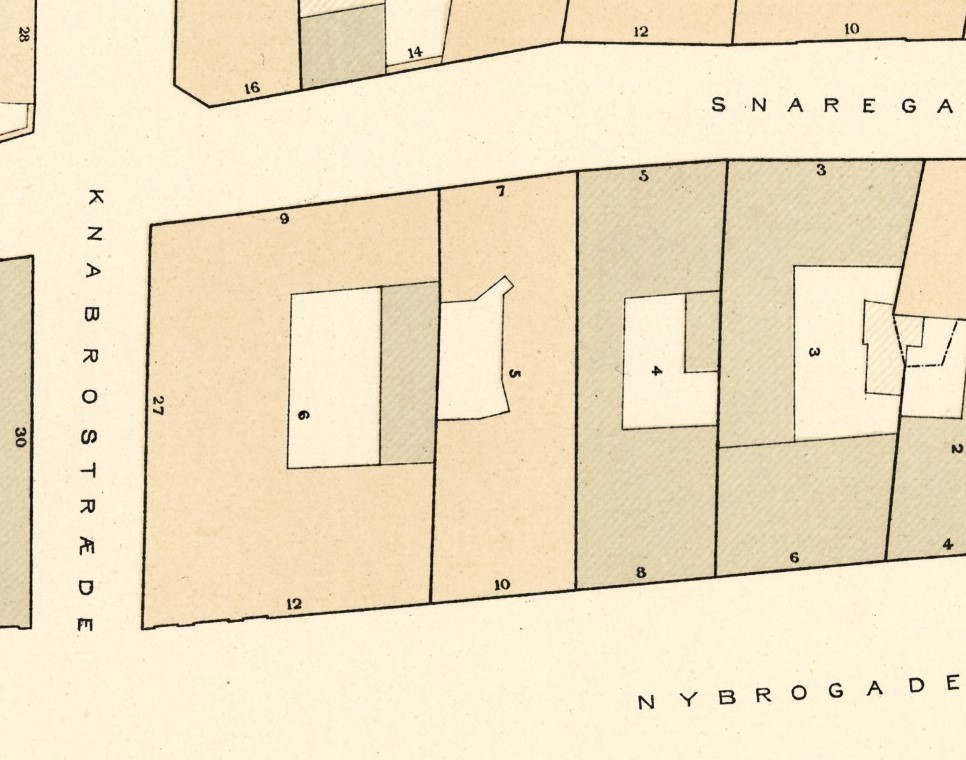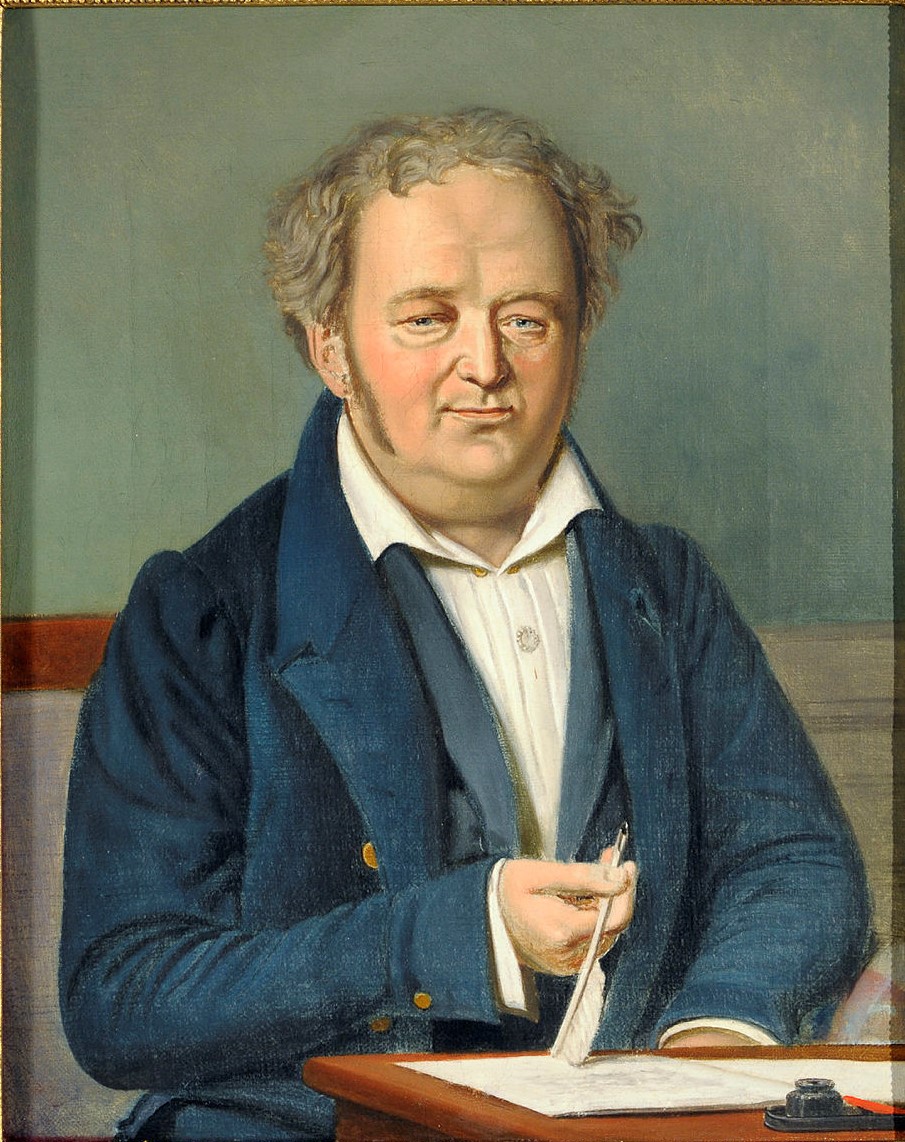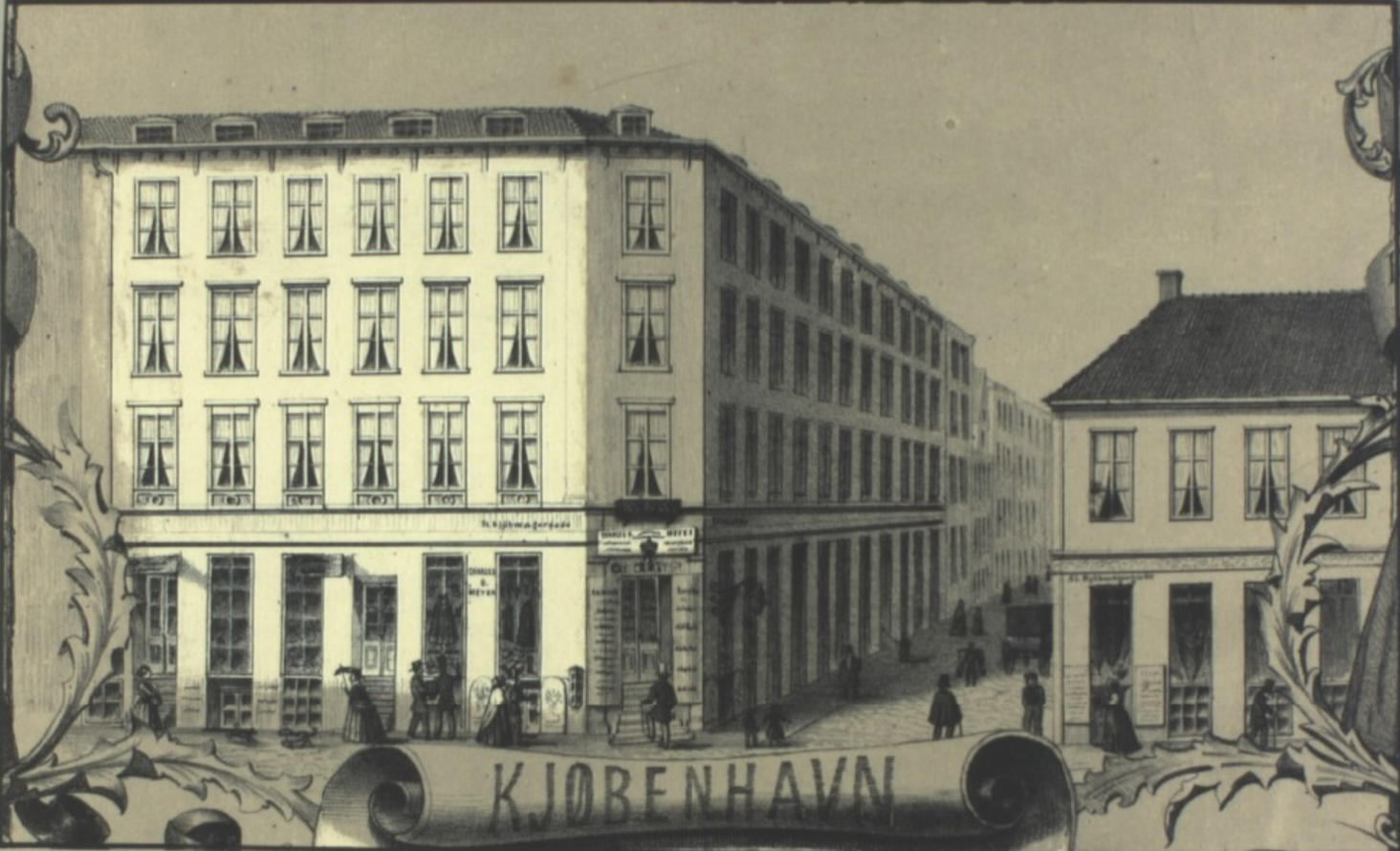|
Johan Gudmann Rohde
Johan Gudmann Rohde (1 November 1856 – 18 February 1935) was a Danish painter, lithographer and designer. He was the principal founder of Den Frie Udstilling, established in 1891 to allow artists to exhibit works which did not fall within the Academy's selection criteria."Om Den Frie" , Den Frie Udstilling. Retrieved 30 January 2013. Early life Rhode was born on 1 November 1856 in Randers, the son of merchant Hermann Peter Rohde. (1827–97) and Ane Marie Schmidt (1832–1915). He matriculated from grammar school in 1875, he first studied medicine before deciding to turn to art and paintings. After studying privately under Wenzel Tornøe, he entered the Academy in 1882. Unhappy with the institution's refusal to accept modern trends, he ...[...More Info...] [...Related Items...] OR: [Wikipedia] [Google] [Baidu] |
Kunstnernes Frie Studieskoler
Kunstnernes Frie Studieskoler was an art school established in Copenhagen in 1882 as a protest against the policies of the Royal Danish Academy of Fine Arts and to provide an alternative to its educational program. It existed until 1912 and was a central institution of the Modern Breakthrough in Danish art. History Foundation of the new school From its foundation in 1754, the Royal Danish Academy of Fine Arts exercised a dominating role in the education of artists in Denmark. During the first half of the 19th century, with Christoffer Wilhelm Eckersberg as the central figure, the institution was the basis of what has become known as the Golden Age of Danish Painting. Another major influence at the academy was professor Niels Laurits Høyen who advocated a nationalistic approach to art. Gradually the legacy from Eckersberg, who died in 1854, and Høyen's demand for nationalistic art became an obstacle deterring the assimilation of new trends from abroad and creating a vacuum in Dani ... [...More Info...] [...Related Items...] OR: [Wikipedia] [Google] [Baidu] |
Ny Carlsberg Glyptotek
The Ny Carlsberg Glyptotek ("ny" means "new" in Danish; "Glyptotek" comes from the Greek root ''glyphein'', to carve, and ''theke'', storing place), commonly known simply as Glyptoteket, is an art museum in Copenhagen, Denmark. The collection represents the private art collection of Carl Jacobsen (1842–1914), the son of the founder of the Carlsberg Breweries. Primarily a sculpture museum, as indicated by the name, the focal point of the museum is antique sculpture from the ancient cultures around the Mediterranean, including Egypt, Rome and Greece, as well as more modern sculptures such as a collection of Auguste Rodin's works, considered to be the most important outside France. However, the museum is equally noted for its collection of paintings that includes an extensive collection of French impressionists and Post-impressionists as well as Danish Golden Age paintings. The French Collection includes works by painters such as Jacques-Louis David, Monet, Pissarro, Reno ... [...More Info...] [...Related Items...] OR: [Wikipedia] [Google] [Baidu] |
Gabriele Rohde
Gabriele Rohde (1904–1946) was a Danish League of Nations official in the 1930s and, during the Second World War, a member of the Danish Council (''Det danske Råd'') in London. She provided strong support in particular for Danish seafarers, creating a seamen's club in Newcastle. In 1943, Rohde travelled to Canada and the United States where she became an advisor to Henrik Kauffmann, the Danish ambassador in Washington. She assisted him in particular with his participation in the United Nations Relief and Rehabilitation Administration (UNRRA) conference which was held in Atlantic City that November. Shortly after returning to Denmark at the end of the war, she died in a tragic accident. Biography Born in Copenhagen on 7 September 1904, Gabriele Rohde was the daughter of the painter Johan Gudmann Rohde (1856–1935) and Asa Zøylner (1874–1960). In May 1945, she married the estate owner and resistance member Gunnar Flemming Juncker (1904–2002). Brought up in a cultural mili ... [...More Info...] [...Related Items...] OR: [Wikipedia] [Google] [Baidu] |
Hellerup
Hellerup () is a very affluent district of Gentofte Municipality in the suburbs of Copenhagen, Denmark. The most urban part of the district is centred on Strandvejen and is bordered by Østerbro to the south and the Øresund to the east. It comprises Tuborg Havn, the redeveloped brewery site of Tuborg Breweries, with the Waterfront Shopping Center, a marina and the headquarters of several large companies. Other parts of the district consist of single family detached homes. Local landmarks include the science centre Experimentarium and the art Øregaard Museum. Geography With an area of approximately 515 hectares, Hellerup covers 20% of the municipality. The district is bounded by the municipal border with Copenhagen (Østerbro) to the south, the Øresund to the east, Charlottenlund Forrest to the north, Lyngbyvej to the southwest and Niels Andersens Vej/Eivindsvej to the northwest. As of a January 2012, Hellerup had a population of 18,781, equaling 25% of the municipal populatio ... [...More Info...] [...Related Items...] OR: [Wikipedia] [Google] [Baidu] |
Ny Vestergade
Ny Vestergade ( lit. English: New West Street) is a street in central Copenhagen, Denmark. It runs from Frederiksholms Kanal to Vester Voldgade and together with Christiansborg's riding grounds, Marble Bridge and Dantes Plads forms an axis between Christiansborg's tower in the east and Ny Carlsberg Glyptotek's dome in the west. The National Museum's main entrance is located in the street. History Ny Vestergade is one of the streets that was created when the Frederiksholm neighbourhood was established in the 1660s. It is referred to as ''Den Nye Vestergade'' ("The New West Street") in 1665 but was long more commonly called Wigandts Gade after wine trader and ship owner Wigand Michelbecker (1636-1692), who owned a property where National Museum is now located. The name "New" refers to the old Vestergade, which extends westwards from Gammeltorv. Notable buildings and residents The National Museum occupies the entire north side of the street. The recessed main entrance w ... [...More Info...] [...Related Items...] OR: [Wikipedia] [Google] [Baidu] |
Åbenrå )street)
Aabenraa (; , ; Sønderjysk: ''Affenråe'') is a town in Southern Denmark, at the head of the Aabenraa Fjord, an arm of the Little Belt, north of the Denmark–Germany border and north of German town of Flensburg. It was the seat of Sønderjyllands Amt (South Jutland County) until 1 January 2007, when the Region of Southern Denmark was created as part of the 2007 Danish Municipal Reform. With a population of 16,401 (1 January 2022),BY3: Population 1. January by urban areas, area and population density The Mobile Statbank from Aabenraa is the largest town and the seat of the [...More Info...] [...Related Items...] OR: [Wikipedia] [Google] [Baidu] |
Ziegler House, Copenhagen
The Ziegler House (Danish: (Hofkonditor) Zieglers Gård), located at the corner of Nybrogade (No. 12) and Knabrostræde (No. 27), is an 18th-century Rococo-style, bourgeoisie townhouse overlooking Slotsholmens Kanal and Slotsholmen in central Copenhagen, Denmark. The building was designed by Philip de Lange and formerly also known as Eneretsgården. It is now owned by Karberghus and operated as serviced offices under the name Zieglers Gaard Office Club. It was listed on the Danish registry of protected buildings and places in 1918. History 18th century The site was formerly made up of two separate properties. The eastern of these properties were listed in Copenhagen's first cadastre of 1689 as No. 7 in Snaren's Quarter, owned by councilman Morten Nielsen. The owestern property was listed as No. 8 and belonged to and recently deceased Thomas Engelbreht's heirs. The buildings were both destroyed in the Copenhagen Fire of 1728. Court pastry chef Johan Henrik Ziegler charged Phi ... [...More Info...] [...Related Items...] OR: [Wikipedia] [Google] [Baidu] |
Kvæsthusgade
Kvæsthusgade is a short street in the Nyhavn Quarter of central Copenhagen, Denmark. It runs from the mouth of the Nyhavn canal in the south to Ofelia Plads in the north. The rear side of the Royal Danish Playhouse dominates the east side of the street. The Zinn House at No. 3 and the neighbouring building at No. 5 are both listed in the Danish registry of protected buildings and places. History The street takes its name after the Kvæsthus, a military hospital, which relocated to the site in 1680. It is known that a hospital for boatsmen was founded in 1618 and it was then most likely situated at the Church of Holmen. It was moved to Gothersgade in 1628 and again in 1658 to Sejlhuset at Bremerholm. In 1668, the hospital moved to Børnehuset in Christianshavn and in 1675 to Guldhuset in Rigensgade. The name Kvæsthus was introduced with the inauguration of the new building for the institution at the corner of present day Kvæsthusgade and Sankt Annæ Plads in 1685. I ... [...More Info...] [...Related Items...] OR: [Wikipedia] [Google] [Baidu] |
Zinn House
The Zinn House ( da, Zinnske Gård), located at Kvæsthusgade 3, is a historic townhouse around the corner from the Nyhavn Canal in central Copenhagen, Denmark. It takes its name after the Johann Ludvig Zinn, Zinn family, a wealthy family of merchants that owned it for more than 150 years. The composer Johan Peter Emilius Hartmann, who was married to Emma Hartmann, Emma Sophie Amalie Zinn, a grand daughter of Johann Ludvig Zinn, lived on the second floor for more than 70 years in the period 1829–1900. The building was adapted in 1907. It was later in the century converted into offices. The building was listed on the Listed buildings in Copenhagen Municipality, Danish registry of protected buildings and places in 1959. History Oluf Blach The site was in 1689 part of a larger property (No. 21, St. Ann's East Quarter) owned by Nikolaj Veisling. It was built over with two storeys in 1751 for the merchant Oluf Blach (1694–1767). He had made a fortune on North Atlantic trade and ... [...More Info...] [...Related Items...] OR: [Wikipedia] [Google] [Baidu] |
Silkegade
Silkegade ( lit. "Silk Street") is a minor street in the Old Town of Copenhagen, Denmark, linking busy shopping street Købmagergade in the west with Pilestræde in the east. Sparekassen Bikuben's former headquarters at No. 6–8 is listed on the Danish registry of protected buildings and places. The entrance to department store Illum's multi-storey parking facility is also located in the street. History Created in 1620, the street takes its name after the Silk Company (Silkecompagniet) which was founded at the initiative of Christian IV in 1618. The company operated a silk manufactory at the corner with Pilestræde. A row of 14 identical houses with a total of 50 apartments was also constructed in the street. They were designed by Hans van Steenwinckel the Younger and used for housing a group of German silk weavers who had been called to Denmark by the king to boot the silk production. The Silk Company was most likely already shut down in 1631. Some of the townhouses and a buil ... [...More Info...] [...Related Items...] OR: [Wikipedia] [Google] [Baidu] |
Nyhavn 22
Nyhavn 22 is an 18th-century building overlooking the Nyhavn Canal in central Copenhagen, Denmark. In 1949, it was acquired by neighboring Hotel Bethel and used for an extension of the hotel. In the middle of the 19th century, it was owned by the businessman Mathias Wilheæl, Saas- Other notable former residents include the medical doctor and painter Johan Rohde. History Early history The site was formerly part of Ulrik Frederik Gyldenløve's large property at the corner of Kongens Nytorv and Nyhavn. In Copenhagen's first cadastre from 1689 it was listed as No. 54 in St. Ann's East Quarter. On 5 January 1700. Gyldenløve ceded the property to dowager queen Charlotte Amalie. A narrow strip of land along the canal, from Charlottenborg to Møntgade (now part of Holbergsgade), was used for the construction of a row of very small, identical houses for low-ranking officials at the dowager queen's court. The houses were given numbers from 3 to 22. In the new cadastre of 1756, No. 192 ... [...More Info...] [...Related Items...] OR: [Wikipedia] [Google] [Baidu] |
Mogens Ballin
Mogens Ballin (20 March 1871, Copenhagen – 27 January 1914, Hellerup) was a Danish artist, one of a group of painters who gathered in the Breton village of Pont-Aven. He later became a notable silversmith designing jewelry and lamps.Jørn Otto Hansen, "Mogens Ballin" ''Kunstindeks Danmark og Weilbachs Kunstnerleksikon''. Retrieved 10 May 2012. Biography Ballin came from a well-to-do Jewish family in Copenhagen. Of particular importance to his future were the French lessons he had with 's wife, Mette, in |








